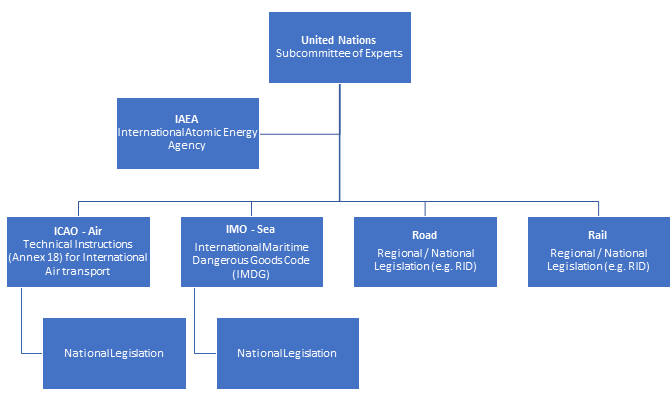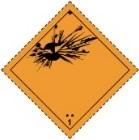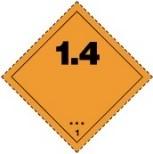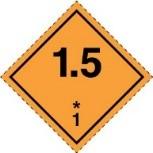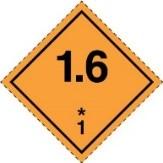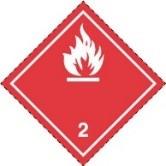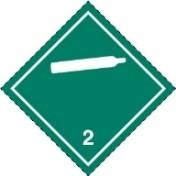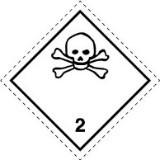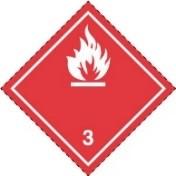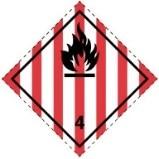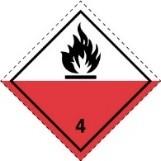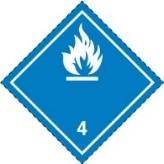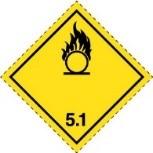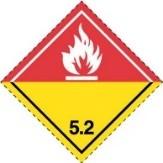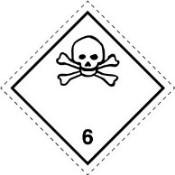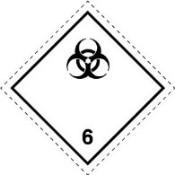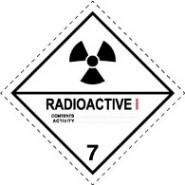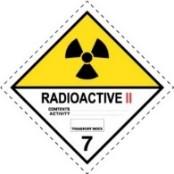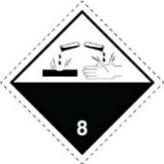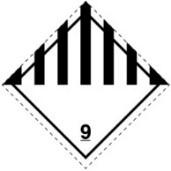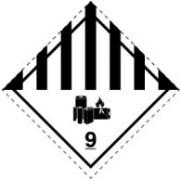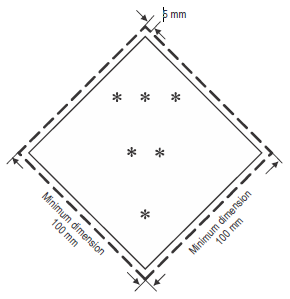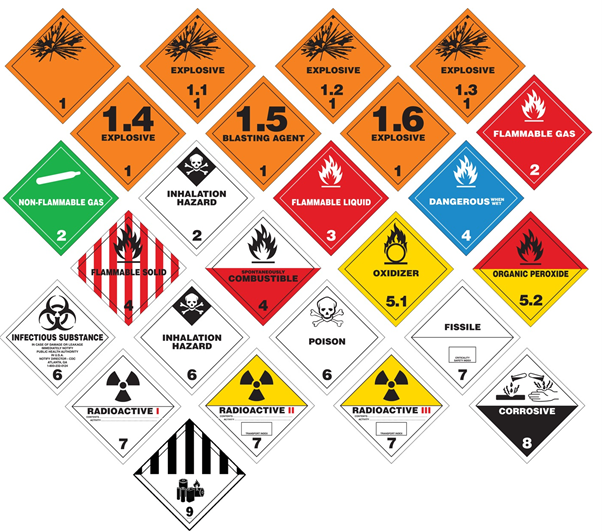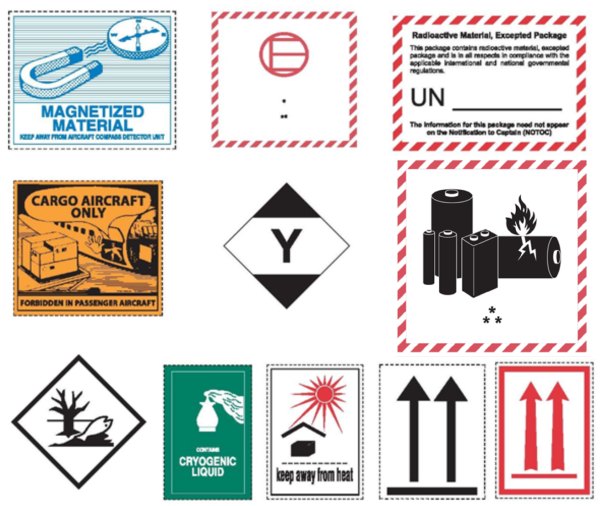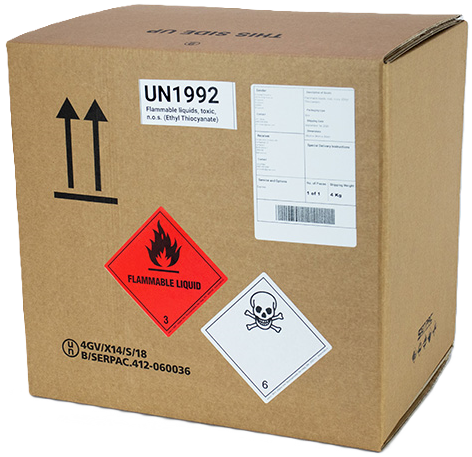Since 1956, the United Nations Committee of Experts on the Transport of Dangerous Goods has compiled, maintained and updated what are known as UN Recommendations on the Transport of Dangerous Goods (UN Model Regulations Rev. 12, 2001). These official recommendations include suggested standards on categorisation, labelling, and harmonised numbering of DG items for quick reference. These official recommendations are not binding - local regulations can choose to adopt, enhance or exclude regulations - and technically only pertain to transportation. Irrespective of the voluntary or specific nature of the guidelines, many international agencies have opted to adopt these standards and nomenclatures for daily use.
As part of the UN Recommendations on the Transport of Dangerous Goods, the United Nations Committee of Experts on the Transport of Dangerous Goods maintains what is called a “Dangerous Goods List,” a consolidated and updated list of commonly transported DG items. The Dangerous Goods List serves as a quick reference tool for persons associated with the transport and handling of DG.
The overall types and number of DG handled by transporters and warehouse personnel can be vast. Different industries have a wide variety of material requirements, and suppliers and manufacturers tend to develop specialised expertise in specific areas of DG. Irrespective of the industry specifics, handlers of DG should have a general understanding of how to manage all potentially hazardous materials they may encounter.
Hazard Class
When it comes to handling and managing DG, there are agreed upon categories of materials/substances that are commonly used between manufacturers and logistics providers, referred to by pre-defined corresponding classes. A table of these common categories and corresponding classes and sub divisions can be seen below.
| Class | Category | Label | Example |
|---|---|---|---|
1Explosives | 1.1 Mass explosion hazard | Demolition | |
| 1.2 Projection hazard but not a mass explosion hazard | Fireworks | ||
| 1.3 Fire hazard and either a minor blast hazard or a minor projection hazard or both, but not a mass explosion hazard | Flares | ||
| 1.4 No significant blast hazard | Safety Devices | ||
| 1.5 Insensitive explosives with a mass explosion hazard | Blasting Agent | ||
| 1.6 Extremely insensitive articles which do not have a mass explosion hazard | Explosive Extremely Insensitive Article | ||
2Gases | 2.1 Flammable gases | Butane, Propane | |
| 2.2 Non‐flammable, non‐toxic gases | Argon, Oxygen | ||
| 2.3 Toxic gases | Insecticide, Pesticide Gas | ||
3 | Flammable Liquids | Diesel, Alcohol | |
4Other Flammable Substances | 4.1 Flammable solids, self‐reactive substances and solid desensitised explosives | Sulphur, Safety Matches | |
| 4.2 Substances liable to spontaneous combustion | White or Yellow Phosphorus | ||
| 4.3 Substances which in contact with water emit flammable gases | Lithium | ||
5Oxidizing Substances and Organic Peroxides | 5.1 Oxidizing substances | Calcium Chlorate, Oxygen Generator | |
| 5.2 Organic peroxides | Hydrogen Peroxide | ||
6Toxic (Poisonous) Substances | 6.1 Toxic substances | Pesticides | |
| 6.2 Infectious substances | Patient Specimens | ||
7 | Radioactive Materials |
| Machine components, Radioactive isotope for diagnosis or treatments |
8 | Corrosives | Acids | |
9 | Miscellaneous Hazardous Materials | First aid kit, Lithium Batteries |
Some hazard classes – such as radioactive materials – may be extremely rare for most humanitarian organisations – but most humanitarian response organisations will handle a variety of different DG items throughout the course of their supply chains.
Some DG items have more than one hazard class, having what is known as a “subsidiary hazard class” – the secondary (or more) set of hazards that define the DG item. As an example, an explosive substance may also be toxic, or a gas may also be corrosive. The leading primary hazard classes and subsidiary hazard classes are identifiable by referencing the substance in the Dangerous Goods List. The classification is universal across multiple modes of transport.
Such hazard classes and their respective labels provide quick and visual indication of all hazards posed by the article or substance. Direct recognition of all hazards, makes it easy to understand the risks, apply segregation (incompatibility) guidelines and ensure everyone is aware they are dealing with DG.
UN DG Numbering System
Contained within the Dangerous Goods List is a consolidated numbering system for the rapid classification of dangerous goods. This list is sometimes referred to as the UN Dangerous Goods Identification Number, Dangerous Goods Classification Number, or Sometimes just the UN Number.
This UN number is universal across multiple modes of transport, and consists of four digits
Example:
| Item Description | Calcium hypochlorite mixture, dry, corrosive with more than 10% but not more than 39% available chlorine |
|---|---|
| UN ID Number | UN 3486 |
Understanding and utilising UN DG numbers is extremely important for anyone planning on procuring, transporting and storing any substance that might be considered dangerous goods. DG numbers are extremely specific to material or chemical composition, and referencing a DG number across the Dangerous Goods List will quickly inform handlers of labelling requirements, packing instructions and limits for different forms of transport, hazard class, special handling needs, and if there are potential secondary hazards such as reacting to other substances.
To enhance the safe handling and transport of goods, users must correctly and accurately identify the UN Number. UN Numbers can be found on the Dangerous Goods List in the first column next to the corresponding DG item. The UN DG number is extremely specific, and many DG items with similar sounding names might have different ID numbers. When determining the ID number, users must use the accurate, full name of the DG item, and may even need to denote the percentages of its chemical composition or even the size of its packaging.
Transporters will rely on this information for the process of properly securing and handling loads, especially air transporters who may be adversely impacted by DG items. If the UN DG Number is unknown, or isn’t readily available, persons involved with the transportation or storage of DG items should not make up a number nor search in the inappropriate places. Wherever possible, logistics personnel should consult with manufactures, properly certified persons, or transport providers to properly identify the correct numbers.
Marking and Labelling
In the context of DG handling, labelling refers to the proper placement of pre-defined labels on the carton, canister, or other form of packaging or overpacking that dangerous good or hazardous items are stored and transported in. The labelling of DG is absolutely essential for air transport, however DG container should be labelled at all points throughout the supply chain, including warehousing and all other forms of transportation.
- Any person or organisation shipping or handling dangerous goods for any reason should be able to clearly identify DG using the appropriate labelling.
- The hazardous material contained within the packaging defines the labelling required.
- Labelling should be easy to read and clearly visible on the outermost outer packing or overpacking, and should be affixed on the side/top of the carton, ideally near the shipping label.
- Mixed or consolidated packages of more than one type of hazardous material must contain proper labelling for each type of dangerous goods. NEVER mix or consolidate hazardous materials into a single package that might react with each other in any way.
- For storage: If at all possible, cartons containing DG should be stored in a manner that makes them easy to access and identify, meaning that the labels should remain visible at all times.
- For transport: If DG containers are palletised, pallets containing DG items should also be clearly labelled on the outside of the pallet wrapping or binding.
- For transport: Each label type must meet the size and colour requirements defined by ICAO and IATA, IMO, or other regulatory body relevant to the mode of transportation.
UN Number – Cartons or containers used for transporting DG items should clearly indicate the correct corresponding UN number.
Hazard Class Labelling – Containers of DG of any kind should he clearly labelled with the corresponding hazard class label. Hazard class labels should not be smaller than 10 cm along the edge. If a container has more than one DG hazard class, each hazard class must be indicated on the outside. Containers with DG that have one or more subsidiary hazard class must also be clearly labelled each subsidiary hazard class on the outside. The colour and symbol of the hazard label, indicates the type of hazard (e.g. red for fire, skull and bones for toxic).
Example Hazard Class Labels:
Handling Labels – Handling labels should be used in conjunction with hazard class labels, but provide specific information specific to the DG that cannot be ascertained from the hazard class alone. This might include package orientation, special handling needs, or special considerations.
Example Handling Labels:
Note: the example labels serve as a guide only. Hazard labels have variations to express even more information, and there are even a wider set of handling labels. Both label types are routinely reviewed and updated by international regulatory bodies. For the most up to date set of labels, please coordinate with a properly certified person or transporter.
Placarding
A placard is a physical sign that denotes a large physical structure that either contains or transports one or more containers of DG items. Physical structures might include:
- Bulk packaging.
- Freight/Cargo container.
- Unit load device (ULD).
- Truck, rail car, or other surface vehicle transporting DG.
- Warehouse (area).
A placard functions much like a sticker label – it denotes the hazard class and specific attributes of the DG contained within vehicle or structure.
The use of placards is not universally regulated nor is it universally enforced, especially as it pertains to use inside of individual countries of operation. Many countries heavily regulate the use of placards on locations that store DG items, or on vehicles that transport DG items, while other countries have limited to no regulation, especially in humanitarian contexts. Persons or organisations operating in any country should understand local regulations surrounding placard usage, and should utilise the appropriate placard where available.
Vehicles or multi-modal containers that may cross international boundaries may be required by one or both countries to properly place placards on vehicles or containers. Shipping containers that contain DG that frequently are transhipped between various ports are usually required to have some form of placarding, commensurate with port and private regulations.
In contexts where placard use is not regulated or enforced, humanitarian agencies should endeavour to still place placards where safe and appropriate. There is no one accepted guidance on placard usage, but as a general rule, any time the cumulative aggregate weight of DG on any one vehicle exceeds 500 kg, then vehicles should be properly marked. Additionally, long term storage locations containing DG should also be clearly placarded.


